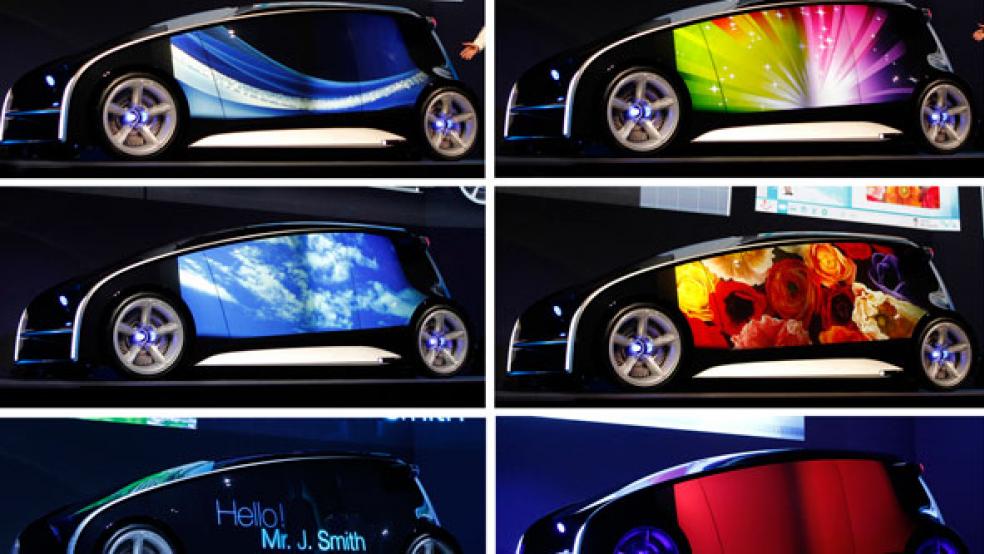You’re driving around, looking for a place for dinner. As you pass a favorite restaurant, you decide to head in, but the parking situation looks grim. Before hunting for a space, you want to make sure a table is available. So you press the “talk” button on the steering wheel and ask the car’s infotainment system to check availability through OpenTable.com. Within seconds, you have a reservation and resume your hunt for parking.
This scenario is not quite real today, but it probably will be within months. Cars are rapidly becoming connected to information in the cloud, and automakers are moving quickly to make their systems more powerful, simpler and safer to use. The new technologies would let drivers do everything from searching the Internet to making reservations to buying movie tickets to, yes, updating their Facebook status, all from behind the wheel. Many of the improvements were on display in Las Vegas at the International Consumer Electronics Show this week.
Related: The 8 Hottest Cars at the 2012 Detroit Auto Show
Ford, Mercedes-Benz, Kia, Audi and Cadillac all showed new connected systems at CES. Ford, which has been partnering with Microsoft for several years, has been particularly aggressive in getting cars throughout its product line connected. The new version of its SYNC system, called MyFord Touch, features a new user interface simplified in response to complaints that the original actually presented too much information. (Older systems can be upgraded from a USB memory stick supplied by Ford.) In addition to navigation and traffic information, the system can provide users with a wide range of information, from store locations to movie show times.
Most of the functions can be controlled through Microsoft-supplied speech recognition. A new feature, called SYNC AppLink, lets users run apps on Android or BlackBerry smartphones through the system’s voice control. For example, you could play music through the car’s stereo using the Pandora app on your phone.
With the exception of General Motors’ OnStar system, which uses a built-in broadband radio, nearly all of the car systems communicate with the Internet through a mobile phone. There are several reasons for this. One is that it spares the carmakers the need to choose a wireless carrier and a wireless technology. Second, it means customers can use their existing phone data plans rather than take out a new $40 to $60 a month subscription for the car. (This concern may eventually go away. Verizon Wireless, for example, has promised to offer family plans that will let customers share their phone minutes and data gigabytes among multiple devices—but officials won’t say just when this will be available.)
A couple of factors could still get in the way of more extensive adoption of connected technology in cars. Safety concerns are a key hurdle. In December, the National Transportation Safety Board came down hard on the use of personal electronic devices in cars, fearing that drivers were becoming ever more distracted by electronic gizmos. There was even talk of seeking technology that would jam wireless signals. The idea drew broad attacks and was quickly rejected by Transportation Secretary Ray LaHood, but car makers have become increasingly sensitive to safety issues.
A second issue is the complex economics of wireless data. To minimize congestion on networks, wireless carriers have been encouraging customers to use Wi-Fi as much as possible, especially when streaming audio or video. Getting a signal in a moving car, however, requires using wireless broadband exclusively. The carriers are simultaneously encouraging use of broadband to supply entertainment (including streaming video for back seat passengers) while imposing data caps that could make such use prohibitively expensive.
The best hope is that the 4G networks now being deployed will create enough new capacity that carriers will be able to offer more data at more affordable prices. Otherwise one big attraction of the connected car, mobile entertainment, could be seriously curtailed.




